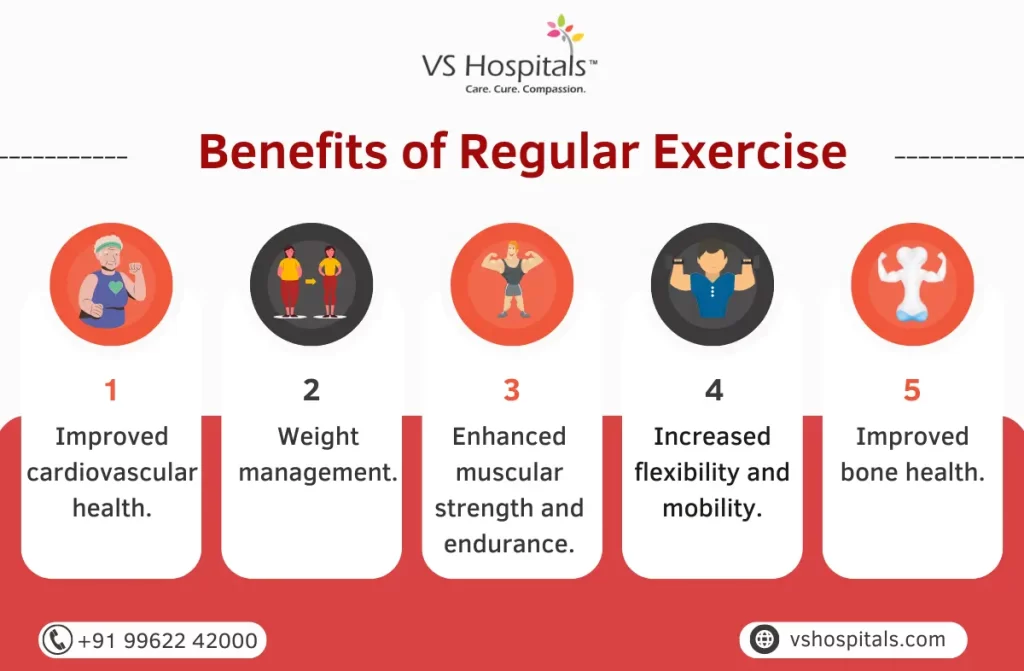Benefits of regular exercise go far beyond physical appearance — it’s a powerful tool for strengthening the heart, boosting energy, improving mood, enhancing flexibility, and supporting long-term health. Regular movement helps prevent chronic diseases, sharpens mental focus, and promotes better sleep, making it one of the most effective habits for overall well-being.
Levels of physical inactivity globally
Physical inactivity is a rising global concern. According to the World Health Organization’s 2024 data, around 31% of adults—about 1.8 billion people—do not meet the recommended activity levels. Over 80% of adolescents fail to get enough activity, raising their chances of developing chronic conditions like heart disease, diabetes, and some cancers. Promoting Exercise for Body Health is now a key public health priority worldwide.
- Regional variations. Inactivity rates are highest in high-income countries, with some regions exceeding 40%, while lower in certain low- and middle-income countries.
- Urbanization and lifestyle changes. Increased desk jobs, reliance on transport, and reduced daily movement contribute to higher inactivity rates.
- Gender disparities. Women are generally more inactive than men in many countries due to cultural, social, and safety barriers.
- Impact on health systems. Physical inactivity contributes to millions of preventable deaths each year and adds significant strain to healthcare budgets.
- Adolescents at risk. With over four in five teens inactive, the long-term risk for chronic disease and poor physical development is high.
The data shows that reversing these trends requires global cooperation, education, and accessible opportunities for movement. Without action, inactivity levels will rise further, but sustained promotion of Exercise for Body Health can shift habits and safeguard public health.

How can I make exercise a part of my regular routine?
- Start small with 10–15 minutes of enjoyable activity and build gradually for lasting success.
- Schedule workouts like appointments to stay consistent and protect your fitness time.
- The benefits of regular exercise include better heart health, improved mood, quality sleep, and higher daily energy.
- Prepare clothes or gear in advance to reduce excuses and make starting easier.
- Mix cardio, strength, and stretching to keep workouts engaging and support all 10 importance of physical fitness.
- Join a group or train with a friend to increase accountability and make exercise fun.
- Set clear, measurable goals so progress is easy to track and adjust.
- Always keep a short backup routine for busy days to maintain momentum.
- Remember, the 10 importance of physical fitness cover heart health, metabolism, strength, flexibility, immunity, sleep, longevity, stress control, social connection, and independence.
- Tracking small wins reinforces motivation, ensuring the benefits of regular exercise match the lifestyle goals within the 10 importance of physical fitness.
What are the health benefits of exercise?
- Improved Cardiovascular Health: Regular exercise plays a vital role in boosting heart health by making the heart muscle stronger and more efficient. Activities like walking, cycling, or running help regulate blood pressure, enhance blood flow, and significantly decrease the likelihood of heart disease and stroke.
- Enhanced Muscular Strength and Bone Density: Weight-bearing and resistance exercises increase muscle mass and strengthen bones. This supports better posture, reduces the risk of osteoporosis, and helps maintain mobility as we age—highlighting the long-term benefits of physical activity.
- Better Mental Health and Mood Stability: Exercise stimulates the release of endorphins, serotonin, and dopamine—neurochemicals that elevate mood and reduce stress. One of the most important benefits of regular exercise is its ability to alleviate symptoms of anxiety and depression.
- Increased Energy and Metabolism: Regular movement boosts energy levels by improving oxygen flow and mitochondrial function. Among the benefits of physical activity, enhanced metabolic efficiency helps manage weight and maintain consistent energy throughout the day.
How much physical activity is recommended?
Knowing how much to move helps you stay healthy and consistent. For adults, aim for 150–300 minutes of moderate activity or 75–150 minutes of vigorous activity weekly, plus strength training twice a week. Children need 60 minutes daily with activities that build bones and muscles. Older adults should follow adult targets but add balance training to prevent falls.
- Break long sitting times with short walks or stretches.
- Start small if inactive and build gradually
Hitting these targets delivers the Benefits of Physical Activity — stronger heart, better mood, improved stamina — while exceeding them can enhance strength, resilience, and mobility. No matter your age, staying active consistently lets you experience the lasting Benefits of Physical Activity throughout life.
The Lasting Advantages of Staying Active
There are various benefits of regular exercise. Some of them include:
- Improved Cardiovascular Health: Engaging in aerobic exercises such as running, swimming, or cycling strengthens your heart and improves blood circulation, reducing the risk of heart disease and stroke.
- Increased Muscular Strength and Endurance: Strength training exercises, like lifting weights or practicing yoga, build muscle mass and enhance overall strength and endurance. These benefits of physical activity help you perform daily activities more efficiently.
- Weight Management: Combining regular exercise with a healthy diet helps maintain a healthy weight by burning calories and increasing metabolism.
- Enhanced Mental Well-Being: Physical activity releases endorphins, also known as “feel-good” hormones, which elevate mood, reduce stress, and combat anxiety and depression.
- Improved Bone Density: Weight-bearing exercises such as walking, jogging, and dancing can help strengthen bones, reducing the risk of osteoporosis and fractures.
Tips for Achieving and Maintaining Physical Fitness
You can follow the below-mentioned as it adds to the benefits of regular exercise. These include:
- Set Realistic Goals: Establish achievable fitness goals that are specific, measurable, attainable, relevant, and time-bound (SMART). This tracks your progress and stays motivated.
- Create a Balanced Exercise Routine: Incorporate a variety of aerobic exercises, strength training, flexibility exercises, and balance activities into your weekly workout routine to address all components of physical fitness.
- Prioritize Consistency: Consistency is key to reap the benefits of physical fitness. Aim for sessions for regular exercise rather than sporadic intense workouts. Start with manageable time frames and gradually increase intensity and duration.
- Get Enough Rest and Recovery: Allow your body to rest and recover between workouts to prevent overexertion and reduce the risk of injuries. Strive to achieve 7-8 hours of restful sleep each night.
Conclusion
To conclude, you should always remember that physical activity performed every day is the key to fitness, and that is what is important. Also, improving your physical fitness can enhance the benefits of regular exercise besides helping you to feel more positive about yourself.
